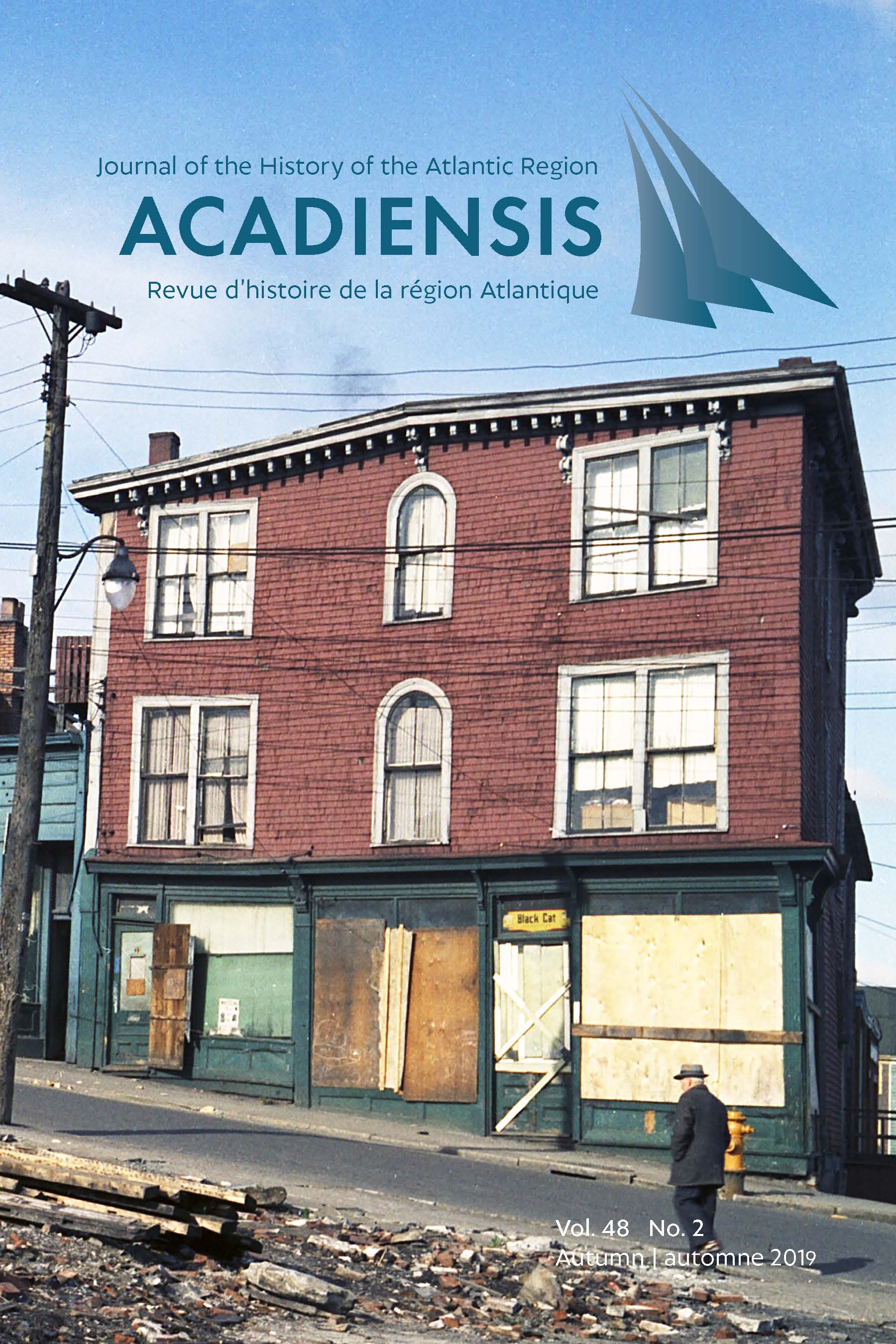Résumé
En nous concentrant sur la période qui a suivi immédiatement l’étude de l’urbaniste Gordon Stephenson sur le réaménagement d’Halifax en 1957 et précédé le début de la relocalisation d’Africville en 1964, nous acquérons une compréhension différente de l’ampleur du transfert de population, de la façon dont l’effet combiné de la race et de la classe sociale a rendu des gens vulnérables au réaménagement urbain, et du pouvoir de l’administration municipale. La compréhension de ces premières initiatives de réaménagement nous amène également à porter un regard différent sur Africville. Les mesures prises par la Ville à cet endroit ont été façonnées par un changement d’attitudes envers le racisme et une tentative, certes inadéquate, de remédier à celui-ci en mettant l’accent sur l’une de ses manifestations les plus visibles : la ségrégation.
Copyright for articles published in this journal is retained by the author(s), with Acadiensis being granted a non-exclusive licence to each and every right in the work throughout the world. After publication of the work, the author(s) shall have the right to self-archive the work and to reprint the work in whole or in part in books authored by or edited by the author(s) without the payment of any fee. In these other formats, however, the author or authors are required to acknowledge the original publication of the work in the pages of the journal. In the case of any requests to reprint the work, Acadiensis will require a standard permission fee -- to be divided equally between the journal and the author. In the event that such requests are received by the author(s), the author(s) shall direct such requests to the journal.

